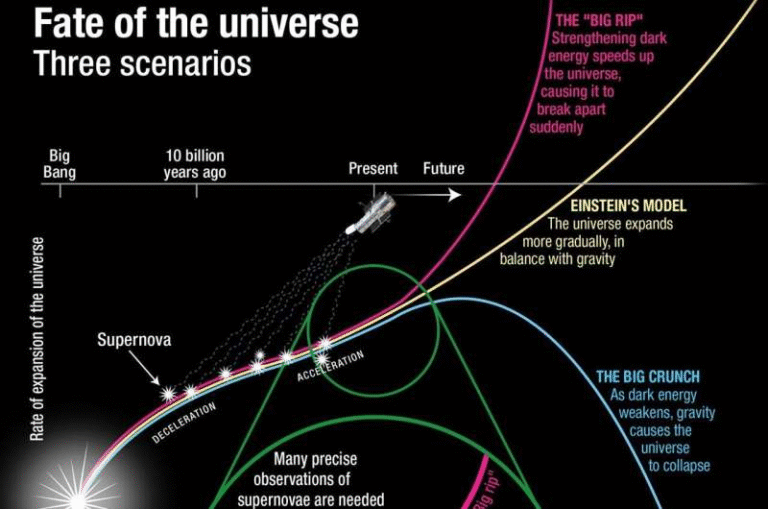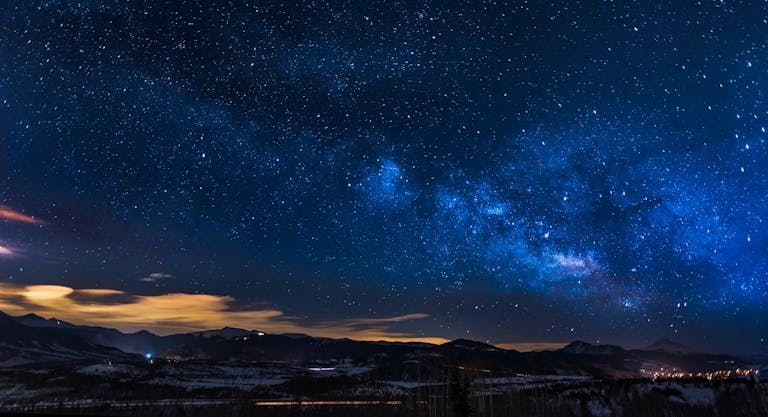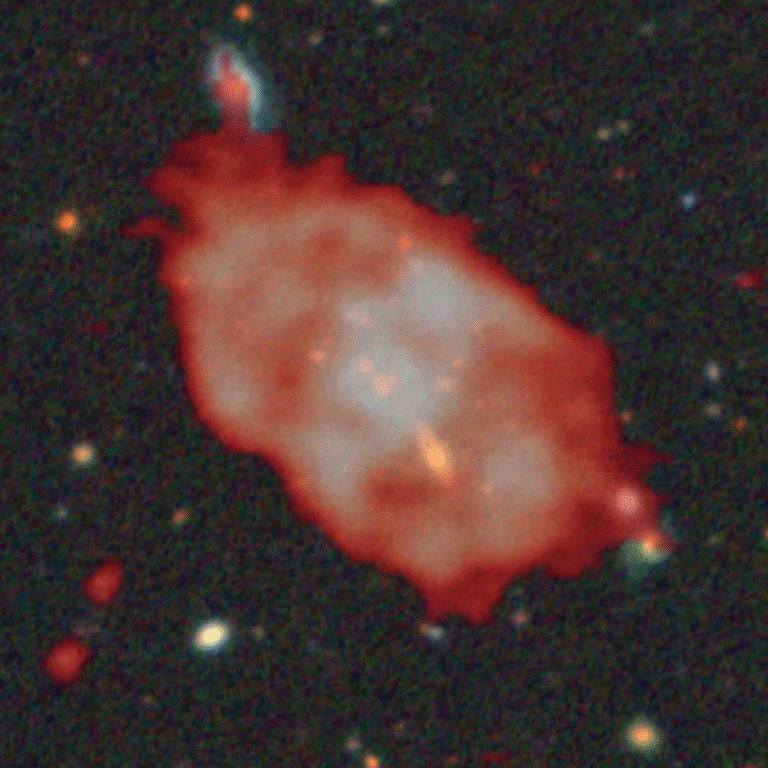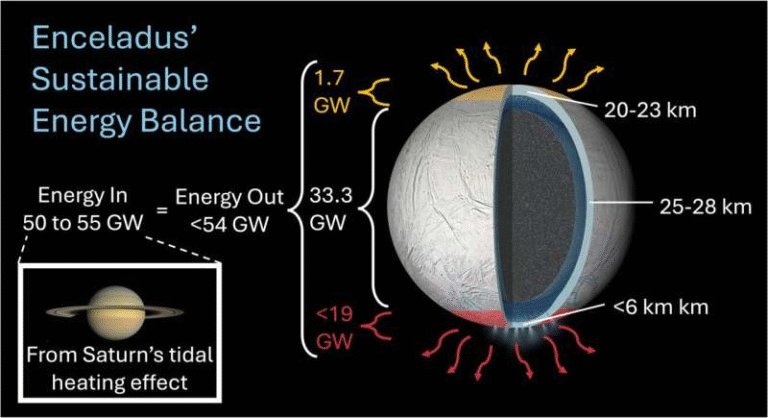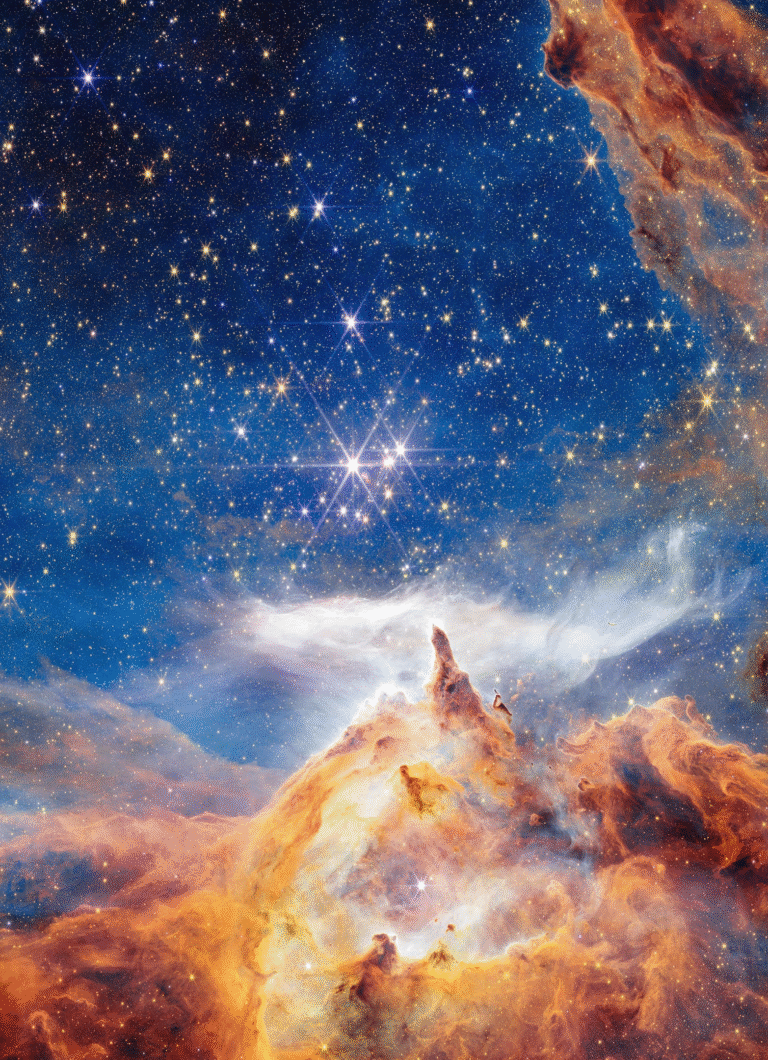Webb Telescope Reveals the Chaotic Childhood of the Universe’s First Galaxies

Astronomers using the James Webb Space Telescope (JWST) have taken one of the most detailed looks yet at how galaxies formed just a few hundred million years after the Big Bang—and it turns out, the universe was a much messier place than we imagined.
A new study led by researchers from the University of Cambridge’s Kavli Institute for Cosmology and the Cavendish Laboratory analyzed over 250 young galaxies that existed when the universe was between 800 million and 1.5 billion years old. The results, published in the Monthly Notices of the Royal Astronomical Society (MNRAS), reveal that these early galaxies were turbulent, clumpy systems filled with gas moving in all directions, rather than the smooth, elegant rotating disks we see in galaxies like our Milky Way today.
Peering Into the Early Universe
Using JWST’s NIRCam instrument in a rarely used grism mode, the research team captured faint light emitted by ionized hydrogen gas within distant galaxies. This mode works by splitting light into its component wavelengths across the telescope’s field of view, allowing scientists to study how gas moves within galaxies that are billions of light-years away.
To make sense of the data, Lola Danhaive, the study’s lead author, developed new software to interpret these complex light spectra. The program combined grism data with high-resolution images from other JWST surveys, helping to build detailed maps of how gas was moving inside each galaxy.
What the researchers found was striking: while a few galaxies showed signs of beginning to rotate in an organized fashion, most were still chaotic, with turbulent gas flows, irregular shapes, and star-forming regions scattered throughout. These galaxies looked nothing like the well-structured spirals or ellipticals we see in the present-day universe.
The Chaotic Era of Galaxy Formation
Earlier telescope observations had suggested that some massive galaxies formed stable, rotating disks quite early—surprisingly soon after the Big Bang. That finding had puzzled scientists because it clashed with existing models of galaxy formation. But this new JWST study provides a clearer, more representative picture.
By analyzing hundreds of galaxies, especially smaller and less massive ones, the Cambridge team found that most were still struggling to settle into order. The early universe was a turbulent environment filled with gravitational instabilities, frequent galaxy mergers, and intense bursts of star formation. These conditions stirred up enormous amounts of energy and motion, preventing gas and stars from settling into the neat disks that characterize more mature galaxies.

Credit: Royal Astronomical Society
In essence, galaxies at that time were still in their “teenage phase”—energetic, unstable, and rapidly changing. As billions of years passed, star formation slowed, gas cooled, and gravity gradually organized these systems into the graceful spiral and elliptical galaxies that now fill the cosmos.
How This Study Fits Into the Big Picture
This discovery helps bridge an important gap between two major periods in the universe’s history: the epoch of reionization and cosmic noon.
- The epoch of reionization occurred a few hundred million years after the Big Bang, when the first stars and galaxies began to form and reionize the neutral hydrogen gas that filled the universe.
- Cosmic noon, which came a few billion years later, was the period when star formation reached its peak across the cosmos.
The new findings show how galaxies evolved during the time between these two eras—how they transitioned from chaotic, clumpy structures into the organized galaxies we see today.
The results also help explain why previous observations of early, well-ordered disks were outliers rather than the norm. Those earlier studies often focused on a few massive galaxies, giving the misleading impression that most galaxies were already stable. The larger, more diverse JWST sample now reveals that the majority of galaxies were anything but stable at those early times.
The Power of JWST’s NIRCam Grism Mode
JWST’s Near-Infrared Camera (NIRCam) is primarily known for taking stunning deep-space images, but in this study, it was used in grism spectroscopy mode, which is capable of capturing spectral data for every object in its field of view simultaneously.
This approach allowed scientists to analyze the gas dynamics within hundreds of galaxies at once—something that was simply impossible with older telescopes. By studying the movement of ionized hydrogen gas, astronomers can infer how galaxies are rotating (or not rotating), how turbulent their gas is, and how quickly stars are forming.
The team’s innovative use of grism spectroscopy, combined with newly written data-analysis code, represents a significant step forward in our ability to study galaxy kinematics—the motion of gas and stars inside galaxies—at high redshifts (meaning very far back in time).
What Causes All the Turbulence?
There are several key reasons why the early universe was so chaotic:
- High Gas Content: Early galaxies contained much more gas relative to their total mass than modern galaxies do. This gas was constantly collapsing, forming stars, and generating powerful stellar winds and supernova explosions that stirred everything up.
- Frequent Mergers: The universe was smaller and denser, so galaxies were closer together and collided more often. These mergers disrupted any structure that might have begun to form.
- Rapid Star Formation: Early galaxies were undergoing intense bursts of star formation, creating new stars at a frantic rate. This process released huge amounts of energy and radiation, adding to the overall turbulence.
- Gravitational Instabilities: Because these galaxies were still assembling their mass, they lacked the stable gravitational balance that characterizes mature systems.
All these factors combined to create galaxies that were “puffed up”, irregular, and constantly changing.
Why This Matters for Understanding the Milky Way
Our own Milky Way galaxy is a relatively calm, well-ordered spiral system today—but it wasn’t always that way. Studies like this one help astronomers trace the Milky Way’s ancestry, showing that even large, elegant galaxies began as messy clumps of gas and stars billions of years ago.
By understanding how galaxies transitioned from turbulent to ordered systems, scientists can better explain how spiral arms formed, how galactic disks stabilized, and how elements were distributed through successive generations of stars.
The Road Ahead
This research is only the beginning. The team plans to combine their findings with future JWST observations of cold gas and dust—components that are crucial for forming stars but are harder to detect. By studying these together, astronomers hope to build a more complete picture of how the earliest galaxies took shape.
Future studies will also look at how galaxy dynamics changed over time, connecting the dots between the clumpy galaxies of the early universe and the structured galaxies of later cosmic epochs.
As JWST continues its mission, astronomers expect to uncover even more surprises about how the universe evolved during its first billion years. The telescope’s unprecedented sensitivity and resolution are opening a new window into an era of cosmic history that was once out of reach.
A Quick Look at the Study Details
- Lead Author: Lola Danhaive (Kavli Institute for Cosmology, University of Cambridge)
- Co-Author: Sandro Tacchella (Cavendish Laboratory, University of Cambridge)
- Instrument Used: JWST’s NIRCam in grism mode
- Sample Size: Over 250 galaxies
- Cosmic Age Studied: 800 million – 1.5 billion years after the Big Bang
- Key Finding: Most early galaxies were turbulent, clumpy, and unstable, with few showing ordered rotation.
- Publication: Monthly Notices of the Royal Astronomical Society (2025)
- DOI: 10.1093/mnras/staf1540
Understanding Galaxy Formation: A Broader Context
In the standard model of cosmology, galaxies form through hierarchical growth—smaller structures merge to create larger ones over time. The early universe was dominated by small, gas-rich systems that collided frequently. Over billions of years, these mergers and the gradual settling of gas formed the structured galaxies we see today.
The new JWST observations provide direct evidence supporting this theory. They capture galaxies right in the middle of that chaotic growth phase, confirming that the process of becoming a calm, rotating disk takes time.
This is not just about distant galaxies—it’s also a story about us. Every star in the night sky, including our Sun, owes its existence to that ancient cosmic chaos.
Research Reference:
The dawn of disks: unveiling the turbulent ionised gas kinematics of the galaxy population at z ~ 4–6 with JWST/NIRCam grism spectroscopy
